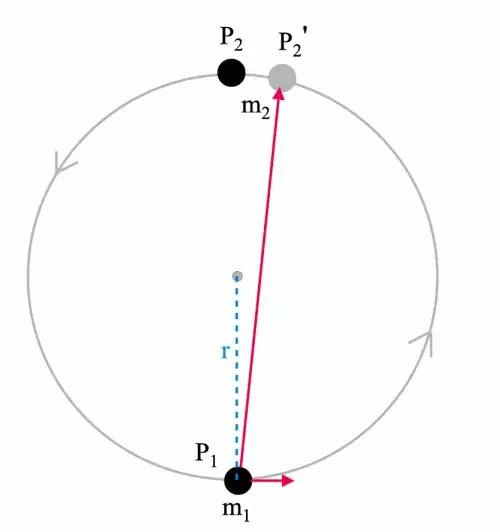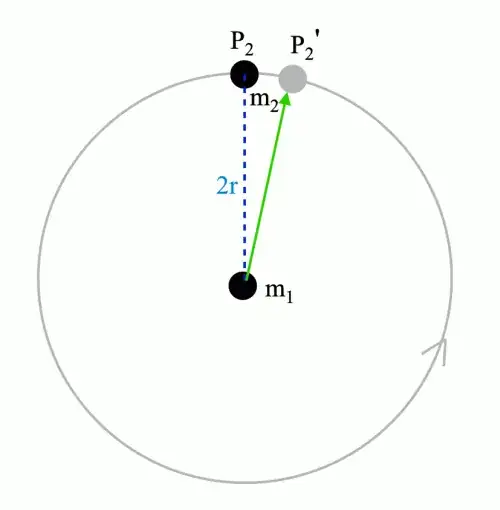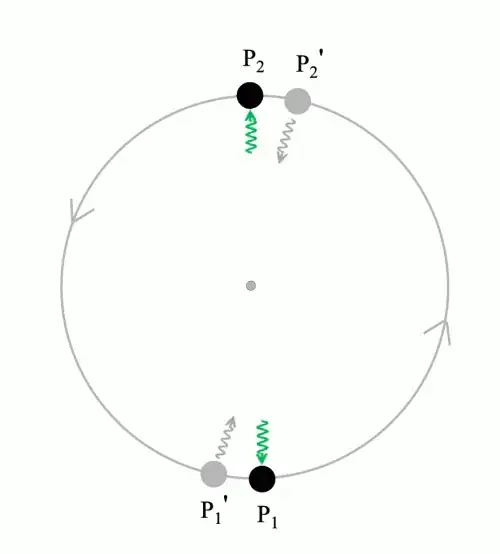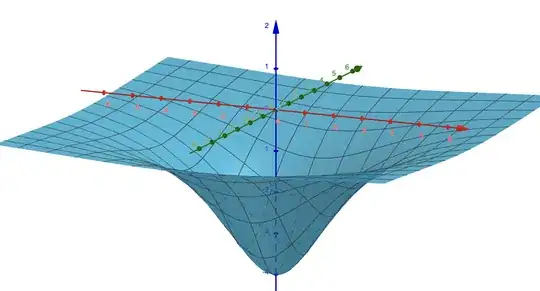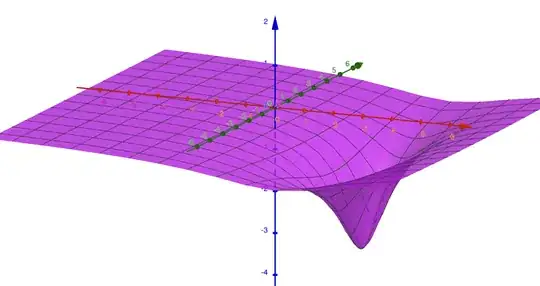I was wondering how the finite speed of gravity waves influences the behaviour of galaxies, and came up with this thought experiment, that seems to give different results when looked at from different reference frames. Forgive me for using Newtonian terminology in the description.
Assume a circle of stars, all of equal mass, distributed equidistantly along the circle. We assume there is no mass in the centre for the moment. Assume the stars all have exactly the correct velocity to travel counterclockwise along the circle. See the 8 black dots representing the stars in this figure:
As seen from the outside inertial frame, the stars are all orbiting around the common centre of mass, they experience a gravitational pull towards the centre of mass, and as a result, only experience acceleration directed towards the centre. Because the situation is fully symmetric, that centre of mass will not move, and the stars keep orbiting forever.
But if we view the situation from one of the stars (the bottom star in the figure above), the situation is different. The gravity from the other stars takes time to reach the star, so their gravitational pull should come from slightly behind their real positions. We assume that gravity travels with the speed of light, then it will appear to pull from a star’s visible location, the white dots in the figure above. As a result, the combined gravity from the other stars shouldn’t pull towards the centre of the circle, but slightly to the right, along the red arrow in the figure.
This should also imply that the star experiences, besides the radial acceleration, also acceleration tangent to the circle. That is, its speed along the circle should increase. Because this situation is fully symmetrical for all stars, all the stars should gain more and more speed over time, and eventually they should spiral away from each other.
Because this can obviously not be true, there must be a mistake in my way of thinking. What is it?
And how does the situation change if there is a black hole in the middle of the circle? Due to the stretching of space around a black hole, gravity should take even longer to reach the other side of the circle?
UPDATE: The answer to a similar question quoted by @benrg in the comments, links to the following explanation on the web: https://math.ucr.edu/home/baez/physics/Relativity/GR/grav_speed.html
The main explanation in this essay is:
In that case, one finds that the "force" in GR is not quite central—it does not point directly towards the source of the gravitational field—and that it depends on velocity as well as position. The net result is that the effect of propagation delay is almost exactly cancelled, and general relativity very nearly reproduces the newtonian result.
They also state that the same is true for electro-magnetism:
If a charged particle is moving at a constant velocity, it exerts a force that points toward its present position, not its retarded position, even though electromagnetic interactions certainly move at the speed of light. [...] a calculation shows that the force on A points not towards B's retarded position, but towards B's "linearly extrapolated" retarded position. [...] This is exactly what one finds when one solves the equations of motion in general relativity.
So, in short, the gravity will not appear to come from the actual retarded position, but from an "extrapolated" position.
Is it possible to explain that phenomenon from an intuitive physics point of view, avoiding faster-than-light communication and without going into tensor calculus?

